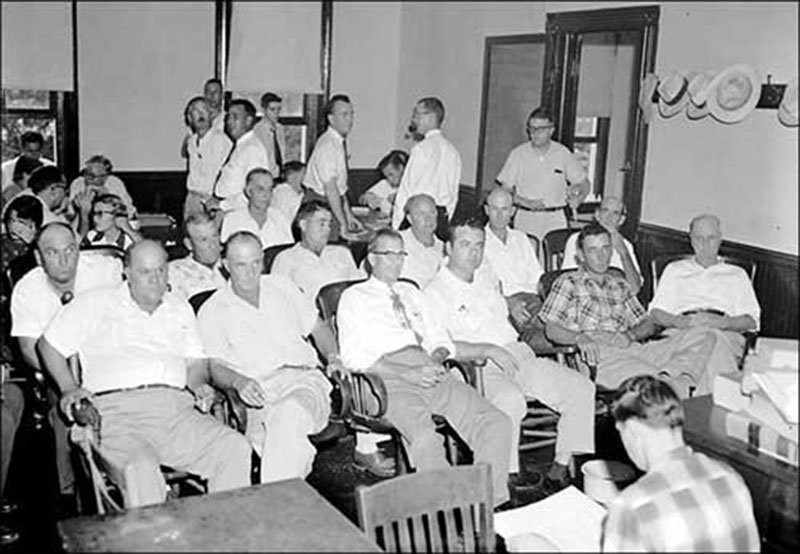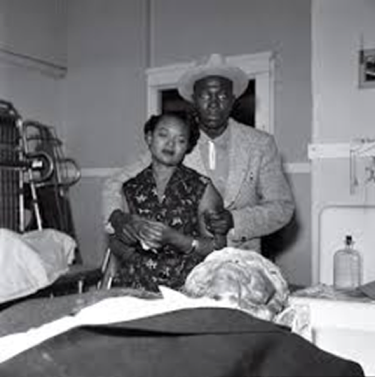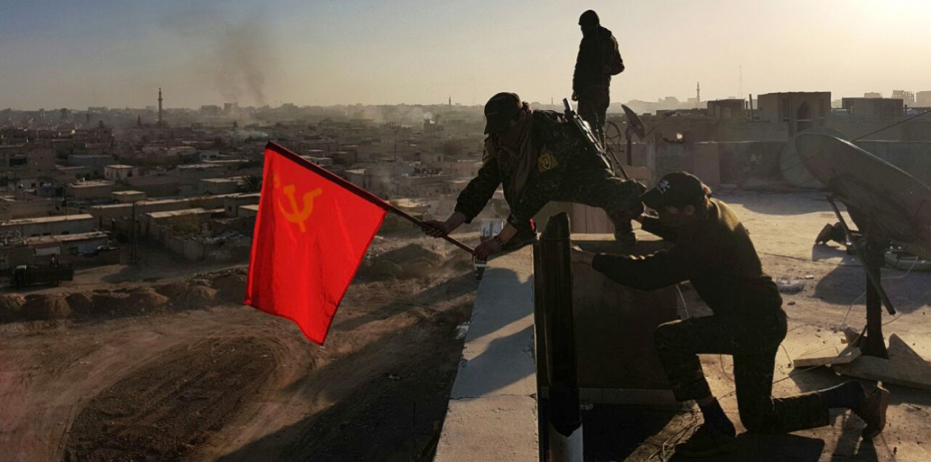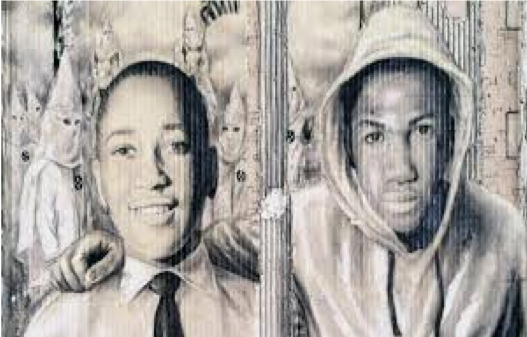Emmett Till: the photograph that made a martyr, started a movement
Written by Amy Hema, for an assignment on ‘communicating, consuming, and commodifying evil and suffering’, in ANTH424.

Emmett Till as pictured at his funeral, in an open casket; deformations the results of the violent nature of his race-based murder.
When thinking about images of evil, this photo immediately comes to mind. I was introduced to it eight years ago, and to me it has always been the epitome of evil.
The photo is of a young boy named Emmett Till, who became a martyr for the US Civil Rights movement after his tragic murder.
But how did one tragedy influence a whole country? With a photograph.
The Murder of Emmett Till
Emmett was a 14-year-old African American boy, who in the summer of 1955 travelled from his hometown [1] Chicago to Mississippi. Before boarding the train, he kissed his mother goodbye, unbeknownst to them both, for the last time.
On August 24th Emmett entered Bryant’s market in the small-town of Money.
The interaction that took place in that store has been debated for decades, but what was reported at the time was that Emmett had been inappropriate with and whistled at the white grocery clerk, Carolyn Bryant [1]
Four days after the alleged incident Carolyn’s husband and his half-brother entered the home where Emmett was staying. They kidnapped, tortured and killed Emmett before tying a cotton gin fan to his neck and throwing his body into the Tallahatchie river, where it would be discovered days later. Emmett’s body had been so badly beaten, the only way to identify him was by his father’s signet ring [1]

Photograph shows the jury at the trial of two white men, Roy Bryant and J.W. Milam, charged with murdering Emmett Till. 9/20/1955. Courtesy: Library of Congress
Roy Bryant and J W Milam were arrested and charged with murder.
They were tried in front of an all-white jury, in a scene Harper Lee herself could have written. After only an hour of deliberation, both Bryant and Milam were found ‘not guilty’[2].
A photo that incensed a nation
I argue that the reason why Emmett became a ‘martyr’, in the sense of his death taking on wider moral and political meaning, is because this photo of his body exists.
Emmett Till was not the first boy to be lynched. At the time, lynching was part of lived reality of African-American communities in the USA [3]. The difference for Emmett is the proliferation of this photograph. This photo exists because Emmett’s mother, Mamie Elisabeth Till-Mobley, made an incredibly difficult decision; to have an open casket funeral. Mamie had to fight for her sons remains to be returned to her, and when she received his remains, she was told the casket had to remain closed [1]

Mamie Till looks stoically over her son. David Jackson (1955). Source: Time: 100 photos http://100photos.time.com/photos/emmett-till-david-jackson NB. In other photos Mamie leans over the casket with an expression of absolute pain and grief.
However, after seeing the horrors that were inflicted upon him, Mamie knew the world had to see what she had seen[4]. The existence of this photo is the enactment of her moral obligation, to a child who could not share his story which needed to be told, and to the world that needed to hear it.
Photos of the body were circulated by Jet Magazine, capturing the brutality of the violence that Emmett had suffered. At the time, these images were circulated within African American audiences only. Being too brutal to publish in mainstream magazines, it would be years before the image became a global phenomenon.
I link this to what anthropologists Kleinman and Kleinman have discussed as the role of suppression in visual representations of suffering[5]. Withholding evidence of suffering denied the public the chance to stand as moral witnesses. The circulation of images like this often by nature only convey one ‘slice’ of a complex reality. However by choosing to not circulate his image, mainstream media outlets were denying and erasing the suffering of Emmett, his family, and the African-American community.
Emmett and the Civil Rights Movement
Kleinman and Kleinman have also argued that images have been used to confront viewers with a moral issue, and call for social action[5]. The photo of Emmett Till is a prime example of moral sentiment being used to rally people toward social justice. Sociologist Joyce Ladner coined the phrase the “Emmett Till Generation” of black activists, to describe the individuals living in the United States who after the death of Emmett Till became heavily involved with civil rights. That term offers a perfect summation of how the image impacted the lives of African Americans[6].
Many consider Emmett’s death and the circulation of the photos to be a catalyst for the civil rights movement, influential activists stated that the death of Emmett had a significant impact on their lives and consequentially their involvement with the civil rights movement. In her memoir, Anne Moody details how the death of Emmett Till made her aware of her own position within society, how after his murder she became afraid of being killed because she was black. Moody went on to describe the rage she felt, at the people who had killed Emmett and the African Americans who, out of fear, stood by and allowed these things to keep happening[7]. Moody’s personal history with the photo demonstrates how moral witnessing, in visual form, not only rallied a generation but created new understandings of how people fit into the world.
Only a few months after the circulation of Emmett’s photo, Rosa parks famously refused to give her bus seat to a white woman, leading to the Montgomery Bus Boycott. When asked why she made that decision she said, ‘I thought of Emmett Till and when the bus driver ordered me to move to the back, I just couldn’t.[4]’
Although Emmett may have not been directly responsible for the civil rights movement, his image was a confrontation of the truth; people could no longer deny that these things were happening and that they could happen to any Black American.
Why does Emmett Till still matter?
Racism still exists within the United States, albeit not in the same way it did 60 years ago. There are no signs separating water fountains or bathrooms. But racism persists in the form of stereotypes, inequality in housing, education and employment opportunities.
Racism in the USA today is the over-representation of unarmed African American teens being killed. Each time there is a killing of a black male in the US, Emmett’s name re-enters the spotlight[8], through his image he has become forever linked with racial violence. Emmett Till was the face of the Black Lives Matter Movement before it existed.
One of the most notorious killings in recent history was that of Trayvon Martin, following the murder of Martin, Emmett Till was once again thrusted into the spotlight. Trayvon and Emmett’s deaths shared a striking resemblance, as the Washington Monthly put it “Separated by a thousand miles, two state borders, and nearly six decades, two young African American boys met tragic fates that seem remarkably similar today: both walked into a small market to buy some candy; both ended up dead.[8]”
The fact that Emmett is still brought up to this day, as a representation of racism and hatred is testament to the power not only of his photo but of images in general, they are lasting, they freeze a moment in time and hold it there. Emmett will never stop being a martyr, because he has been frozen in time as one.
Despite the immense influence of this image, there is still a few glaring questions; sixty years after the circulation of the photo of Emmett, how is it that we are still in the same place? How is it that we are still being bombarded with images of African- American suffering? Have we become, as Frosh put it, desensitised [9]?
We are in a unique period where we can constantly access news and images, in every facet of our lives we are exposed to the suffering of others, but from a position that is so far removed, after a while it becomes harder to empathise. Have we become numb to these killings?
And finally, how many more Emmett Tills will we have to look upon before people change?
References:
[1] See the Documentary: ‘The Murder of Emmett Till’ (2003, PBS).
[2] PBS (n.d.) ‘The Murder of Emmett Till: The Trial of J.W. Milan and Roy Bryant’. PBS: The American Experience. Available at: https://www.pbs.org/wgbh/americanexperience/features/emmett-trial-jw-milam-and-roy-bryant/
[3] In the 75 years leading up to Emmett’s death, it is estimated the over 500 African American’s were lynched within Mississippi, most of them were men accused of associating with white women. https://youtu.be/7uTtNnCw69w?t=426
[4] The Washington Post. ‘Emmett Till’s mother opened his casket and sparked the civil rights movement’. The Washington Post. Available: https://www.washingtonpost.com/news/retropolis/wp/2018/07/12/emmett-tills-mother-opened-his-casket-and-sparked-the-civil-rights-movement/
[5] Kleinman, A. & Kleinman, J. 1996. ‘The Appeal of Experience; the dismay of images: Cultural Appropriations of sufferings in our times.’ Daedalus, 125(1).
[6] Kolin, P.C. The Legacy of Emmett Till
[7] Moody, A. (1968) Coming of Age in Mississippi. Penguin Randomhouse reprint.
[8] Gorn, E.J. (2018). ‘Why Emmett Till still matters’ Chicago Tribune. July 20th. Available: https://www.chicagotribune.com/opinion/commentary/ct-perspec-emmett-till-mississippi-murder-reinvestigation-whistle-white-woman-carolyn-bryant-20180722-story.html
[9] Frosh, P. (2018). ‘The Mouse, the screen and the holocaust witness: Interface aesthetics and moral response’, New Media & Society, 20(1), pp351-368.
Contrasting Evils: The raising of the Soviet flag over the Reichstag building
Written by Etienne DeVilliers, for an assignment on ‘communicating, consuming, and commodifying evil and suffering’, in ANTH424
World War two was one of if not the most costly wars in human history. It has had ongoing significance in global spaces and memory like almost no other event in human history.
The final days of this far-reaching conflict were of particular importance to two groups; the USA and the Soviet Union. In many ways both were trying to present themselves as the hegemonic power of the future [1] with the USA pushing capitalism and the Soviet Union Communism. In particular the “race for Berlin” encapsulates this – with the USA, the French and the British approaching from the western front, and the Soviet Union approaching from the Eastern Front. In many ways, in the closing days of the war the USA were facing two enemies, the remnants of the Axis (in the Japanese and Germans) but also their supposed ally, the Soviet Union [2].

The raising of the Soviet flag over the Reichstag Source: https://en.wikipedia.org/wiki/Raising_a_Flag_over_the_Reichstag#/media/File:Reichstag_flag_original.jpg
An image that encapsulates this complex and nuanced state was the photo of the Raising of the flag of the Soviet Union over the Reichstag building in Berlin in 1945.
Changing meanings, shifting allegiances
The image of the flag on the Reichstag represented different thing to the two hegemonic powers of the USA and the Soviet Union. To the Americans in was a symbol of the raising of a great evil, to the Soviet Union it was a symbol of victory and revenge over an unjust enemy.
The photo itself shows 3 men raising the red flag with the hammer and sickle over the Reichstag surrounded by plumes of smoke. The photographer, Yevgeny Khaldei, stated that he was heavily inspired by the American WWII photograph of the raising of the flag on Iwo Jima, and wished to do something similar. Soviet Union sensitivities meant that Yevgeny Khaldei was not known to be the photographer for many years, the identity of the three men was also unknown until relatively recently.
The imagery present in the photo has shifted meaning drastically over time, as well as having very different meanings within different countries and political alignments.
For the Allies, the Reichstag was in many ways a symbol of their enemy – being in the past the center of German government, the building itself was symbolically constructed to symbolize a unified Germany following its unification in 1871. The Reichstag was covered with statues and images linked to Germany’s mythic past. This highlights the symbolic importance of the Reichstag despite it not being built by the Nazis it reflected much of their ideology. Due to its importance in German history, identity and politics it became a symbol to the allies to – an embodiment of Nazi Germany, and a symbol of what they fought against. This was why the Reichstag was at the center of the Soviet attack on Berlin, despite the fact that it had been a shell of its former self for about 12 years after it was burnt down in 1933.
It was in late April/early May of 1945 that the Reichstag was captured by the ‘red army’ [3]. Many soviet flags were raised on the Reichstag. Out of all the flags raised only one remains in existence today; often referred to as the Victory banner, alluding to the connections of the capturing of the Reichstag and victory within the Soviet mind-set [4]. The victory banner is used at ceremonies commemorating the end of World War 2 and has become of symbol of victory over evil.
Freedom, fascism, and the communist as liberator
Another way that the specific imagery within the photo has be construed by contemporary groups is as a symbol of “Victory over Fascism” by groups such as the international Freedom Battalion (IFB) a far left militant group fighting in places such as Syria against groups such as ISIS [5]. Below is a photograph taken by the IFB in the Syrian city of Raqqa clearly echoing the photo of the Soviet flag on the Reichstag:

The raising of a soviet flag in the Syrian city of Raqqa Source: https://external-preview.redd.it/vFh4-62I3K04F-sgB3qwrxFytHBqY3hK-9BpFYFZbXU.jpg?auto=webp&s=3b37f8dab75a94068502729d08f518d10ae26cbd
To the IFB the photograph represent victory over the evil of facism and as the flag over the Reichstag represented victory over the Nazis the flag in Raqqa to them represents a victory over the Fascism of ISIS [5]. In that regard the Flag raising of the Soviet flag fits into larger trends namely the appeal of experience [7].
This photographic reproduced advances the perception of a continuing tradition of Communists working as liberators. When questioned in regards to the photo these sentiments among IFB members become even clearer “When the red flag flew over Berlin, it was the symbol of victory over nazi-fascism. We consider Raqqa to mean the defeat of Isis-fascism and ourselves to be in the same communist tradition as the liberating troops.”[5]
However, from the perspective of the USA (and many others in the Western block) the image of the communist hammer and sickle on the Reichstag must have seemed an image of two evils: the dying evil of Nazi Germany and the raising evil of the Soviet Union.
We can see this image, showing Soviet Victory over, and the evil it evoked to the Americans, as contributing to the American decision to use the only two nuclear bombs ever used in warfare [2], in Hiroshima and Nagasaki, as a display of strength in the face of their greatest rival, the Soviet Union. Yet this act can be interpreted as evil as well.
Contemporary Controversies
As the power of the Nazis waned and the cold war started with the raising of the iron curtain and the division of Berlin the image of the Soviet flag over the Reichstag would have taken on a whole new meaning, a symbol of a race lost…. as well as a symbol of the division of Berlin, and by extension Europe and the world, into the Eastern block and the Western block, separated by an ‘iron curtain’. Thus it was in the wake of the Cold War that the Soviet flag became to many a symbol of evil in a new way.
This can be seen within contemporary spaces where the Soviet flag no longer commands the political power it once did, it still conveys it. To some it represents liberation and equality but to others it still represents the great other of the Cold War as well as a great evil.
An example of the complex space in which the Soviet flag now sits, its raising at the funeral of a man who had been a communist in Stalybridge, in England in 2019 [6]. From the perspectives of the family it was honoring a relative but to the wider population of the town and wider society it was a brought forth feelings of dismay and outrage [7].

The controversial raising of a Soviet flag at a funeral in Salybridge England. Source: https://twitter.com/guidofawkes/status/972131282644856834
The outcry on social media echoed these sentiments within the population as many considered it inappropriate, following a recent suspected Russian involvement in a nerve gas attack on a journalist. This is due to the intrinsic link the Soviet flag has to Russia, and by extension its connection to the suffering inflicted on people by the Russian state.
The ideas surrounding the two evils present in the photograph of the raising of the flag over the Reichstag have not remained static through history. Rather they have be reshaped by time and by space.
In contemporary Russia the photo is a symbol of righteous revenge, and victory over Nazi Germany. For the USA its meaning has shifted, with the raising of the Iron Curtain and the pressures of the Cold War to come, as a former ally became their greatest enemy. A two very different ideologies clashed, for the USA the Flag of the Soviet Union became an evil as great as the evil incapsulated by the Reichstag itself.
References
- Wallerstein, I., 1993. The world-system after the cold war. Journal of Peace Research, 30(1), pp.1-6.
- Sherwin, M.J., 1995. Hiroshima as politics and history. The Journal of American History, 82(3), pp.1085-1093.
- Hicks, J., 2017. A Holy Relic of War: The Soviet Victory Banner as Artefact. Remembering the Second World War, pp.197-216.
- Tony, L.T.M., 2013. Race for the Reichstag: The 1945 Battle for Berlin. Routledge.
- Oak, G. 2018. A red flag over Raqqa. The Morning star retrieved from: https://morningstaronline.co.uk/article/red-flag-over-raqqa
- Bugby, T. 2019. Family explains flying of Soviet flag in Stalybridge retrieved from: http://www.stalybridgecorrespondent.co.uk/2018/03/10/family-explains-flying-of-soviet-flag-in-stalybridge/
- Kleinman, A. and Kleinman, J., 1996. The appeal of experience; the dismay of images: cultural appropriations of suffering in our times. Daedalus, 125(1), pp.1-23.






Speaking to Socks: An Anthropologist gets KonMari-ed
Posted on by smisu13p
Marie Kondo’s 2014 book, which was a #1 New York Times Bestseller, is reaching new fame through a Netflix TV series in 2019.
Three years ago, I (an anthropologist, feminist, mother, and wife) bought a book. The book was The Life Changing Magic of Tidying.
I read it. I loved it. I sorted my entire house and started folding things for the first time in years. Then I tucked the book into the far corner of a bookshelf and quietly kept folding.
Now suddenly it is cool, and I can come out of the (miraculously tidy) closet as a fan of Marie Kondo.
An image of my husband’s socks and undies drawer, which I ‘Kondo-ed’ last weekend. Am I a bad feminist, or a good wife? No idea, but it sure was satisfying. NB. Marie recommends folding socks and storing upright… ‘balled up’ socks are angsty socks!
On the electric updraft from the Netflix ‘Tidying up with Marie Kondo’ special, there has been a frenzy of decluttering across New Zealand. There are reports of op-shops closing under a flood of donated goods. Kitchens cupboards across the country have never been so organised. Garages have never seemed so spacious. Folding is at an all-time high.
Having run out of drawers to tidy myself, I thought it was time to put on my anthropology hat for a moment and ask: Does this craze mean anything? What is it about a small cheerful Japanese woman who speaks to socks, that is also resonating so deeply in the USA, and NZ, at this moment?
Decluttering the context: gender, class, and the ‘spirit’ of things
Let’s be clear, there is a gendered component to this trend: and I’ll admit the amount of thought I give to stratagizing about the organisation and maintenance of my home gives me mixed feelings as a feminist. The burden of both physical and mental labour to do with the house is typically female. There is also a classed component: the ability to buy, the types of things we buy, and how we view material possessions in relation to both identity and security, in socioeconomic categories and inequalities. Not to mention where and how we are housed. It’s fair to view the success of KonMarie as a largely middle-class female phenomena.
It is interesting too though, how a method that in many ways relates to Asian apartment-style living became so successfully exportable to the USA, NZ, and many other western nations. The geographic component seems no obstacle, but is there a something deeper: a cultural component? And how does it translate?
It seems to me that Marie’s method draws on distinctly Japanese (or at very least, non-European) ways of seeing the world. Particularly what could be broadly called ‘animism’, which is a belief in the aliveness, the ‘essence’ of both sentient and non-sentient things. Animism allows that animals, trees, rocks, mountains, rivers… and yes, socks… all have a ‘spirit’.
This approach to paves the way for a holism that sees our material life as entangled with our own physical, spiritual, and social wellbeing and success.
“What I’d like you to remember as you go through this process is that you’re not alone, the house itself and all your belongings are there to support you and go with you” – Marie to recently-widowed Margie (from ‘Sparking Joy after a loss: episode * in ‘Tidying Up with Marie Kondo’ (Netflix 2019).
So I’m interested to ask now more than ever: in the traditionally dualist or materialist ‘West’, what is drawing us to (or driving us to?) this more animist way of understanding material life?
Joy! (and the dogs of dread on its heels)
Marie Kondo’s central mantra is to surround yourself with only things that ‘spark joy’. Doesn’t that sound delightful? But I think it’s uptake makes most sense when we recognise that material things in many people’s homes, in their amount if not their nature, sparks not joy but shame, anger, dread and exhaustion.
A relatively small pile compared to some of the mountains features in the Netflix show. Image source: https://www.today.com/series/one-small-thing/life-changing-magic-tidying-testing-marie-kondos-method-t21356
Indeed the ‘pile it all up’ part of Marie’s method is designed to confront, and motivate. It certainly highlights the troubling excesses of capitalist consumer society (though that is hopefully news to no-one). This is where the Netflix show grabs me. Watching the mothers, the widows, the retirees – their struggle, their suffocation. Then eventually, their relief.
Honestly I am myself light-years from being a minimalist, before OR after Marie Kondo upends my home. In fact it is the persistence and constancy of clutter in my life brings, it’s crushing weight, that most draws me to KonMari.
One of iteration of memes emerging around Marie Kondo. Source: https://knowyourmeme.com/photos/1447776-tidying-up-with-marie-kondo
I believe that the way ‘we’ (middle-class folk in developed countries) experience this material crisis of clutter in our homes is in its own way, as an existential crisis. I think that the frustration and paralysis about stuff, and what to do with it, goes far beyond being a practical concern. Rather it embodies deep uncertainties about moral ways of living and being; of relating between both present and absent family members; of reconciling past, present, and imagined futures, in our homes and our lives. It is in this context that KonMari method appears as such a shining salvation… a gently charted path (with a cheerful guide) through a minefield of shame, uncertainty, and kitchen appliances.
Certainly when I think about it, it’s not the meaningless-ness of the stuff in my home that bothers me, it’s its meaningfulness. In fact it makes me question the taken-for-granted connection between materialism and individualism. So much of the stuff that entangles us is not because of any innate qualities of the things themselves. It’s not only stuff we bought, but stuff we were given. Stuff we inherited, or hope to pass on. Things that represent who we were, or who we want to be. Things we like to show off, things we want to forget are even there. It’s about social relationships, and identities, memories and hopes and connections. It’s not really material at all. Or individual.
The KonMari method simply lets us acknowledge that. It asks us to feel that, in fact – intimately, as we hold each item in our hands. It reminds us that our homes and our possessions have a history: a social quality and an experiential one. Why not call it a ‘spirit’? Why not speak to it when we want to make a change? It might just work, and here is why…
Why it works: Ritual, emotion, and behaviour
Ritual is a powerful tool for dealing with emotion, and it is sprinkled all throughout the KonMari method: Greeting a house. Feeling a casserole dish. Waking up piles of books. Thanking a pair of socks.
Rituals by definition are actions that carry shared meaning. But they don’t just solidify existing meanings – they can also change them. Rituals are often used to transition things (and people) between different categories. So even a small moment of saying ‘thank you’ to used items can make it easier to mentally move them from the category of ‘possession’ to that of ‘donation’ or ‘trash’, which in turns makes it easier to change our behaviour towards it. To let it go. This works for items we keep as well – rituals of holding, feeling joy, and even folding can and do have the ability to change and how those items will be treated and experienced by their owners.
As an avid second-hand shopper, my wardrobe has always been particularly out of control, but I enjoy my clothes more now not only because I have less and can actually see them in the wardrobe, but because I value them more. They don’t just have functional value, but each one is deliberately chosen, treasured. I find I also think twice before I buy more because I know and value what I have. Also when I do farewell an item I can recognise what it has already given me, rather than feeling guilty.
In this way the KonMarie method is not ‘anti-stuff’ at all. Quite the opposite… it teaches a love, connection, and attachment to material life that seems antithetical to goals of decluttering, but isn’t. It opens a space that paradoxically begins to bring an almost hedonism, to minimalism – but one distinct from the excesses of consumerism.
Marie Kondo. Image source: https://i.cbc.ca/1.4972060.1547065914!/fileImage/httpImage/image.jpg_gen/derivatives/16x9_780/marie-kondo.jpg
When a drawer closes, a window opens…
A summary of these brief anthropological thoughts would be this: Emerging from a Japanese context, the KonMari method is somehow also a timely response to western existential crises of clutter (that are moral, as well as material). Yes it is practical, but it is more than that.
With a persistent cheer and a handful of quiet rituals, Marie is opening a small window in the stuffy room of western rationality. Her methods let us acknowledge our relationship to places and things at the level of affect and being. To both hold on, and let go, with joy.
Posted in Media/political commentary | Tagged animism, anthropology, capitalism, consumerism, decluttering, gender, housekeeping, Japan, KonMari, Marie Kondo, materialism, minimalism, New Zealand, religion, Ritual, spirituality, tidying, USA | Leave a reply